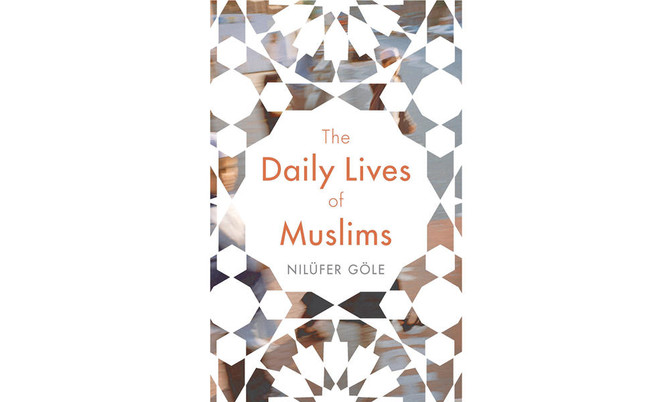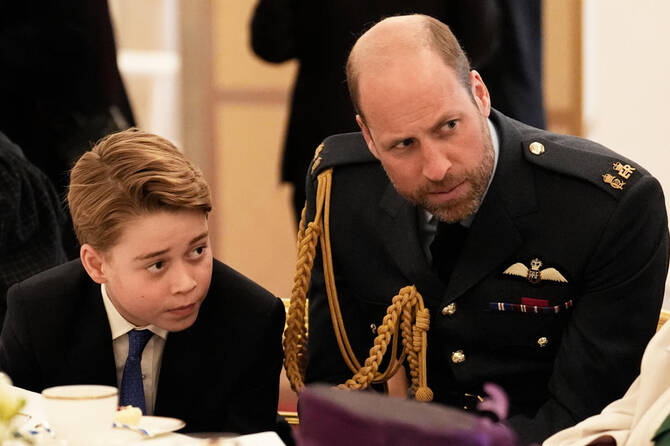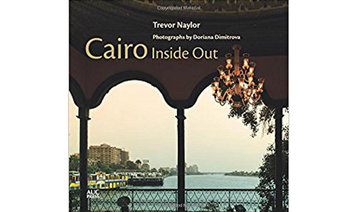It is estimated that 20 million Muslims reside in Europe mostly as a result of immigration due to war, oppression or economic misery. Muslim migrants have become part of everyday life in European cities.
In contrast to their parents, the young generation of Muslims does not see Islam as an obstacle to living in Western societies. But the visibility of Islam in public life engenders increasing feelings of resentment and rejection in European countries.
Nilufer Gole, a Turkish sociologist and director of the Paris-based, School for Advanced Studies in the Social Sciences, sheds light on the controversies surrounding European Muslims, revealing the inherent contradictions and dilemmas of European identities. “The Daily Lives of Muslims” helps us understand the emergence of new faces of Islam fighting to be recognized in universities, in public debates or in parliament and it also brings the voices of a neglected majority of ordinary Muslims into the debate.
The question of Islam in Europe has been on the political agenda for the last 25 years. “The return to national identity, the affirmation of the specificity of European cultural values, the necessity to defend the superiority of Western civilization, all this has had as a consequence the abandoning of any approach based on multiculturalism and cultural relativism,” wrote Nilufer Gole.
The criticism of multiculturalism has given way to identity debates and Islamophobia, which have triggered the emergence of neo-populist movements in Europe. Marine Le Pen, has just come in second in the first round of the French presidential elections. Geert Wilders and his Party for Freedom have shaken the very roots of multicultural heritage in the Netherlands.
In 2011, Anders Behring Breivik went on a killing spree at a youth camp in Norway to denounce European institutions, government parties, the media and intellectuals who have allowed a culture of tolerance that opened the doors to Islam. Muslims are no longer welcome unless they believe in the values of the dominant culture of reference. As a result, new Muslim voices are emerging; eloquent, intelligent and skilled in the art of discussion, they are the faces of European Islam.
This is the case with Tariq Ramadan who advocates the idea of a European Islam. A Swiss citizen, he speaks perfect French and English, teaches at Oxford University in England and heads a specialized center for Islamic legislation and ethics in Doha, Qatar.
Tariq Ramadan criticizes the West’s pretension to hold the monopoly on the universal; he believes in the notion of a “shared universal,” which exists “in the intersections of commonality rather than in the integration of differences.” He also thinks that it is not incompatible to be a Muslim and to live in Europe. Tariq Ramadan is nurturing a new class of European Muslims, “Intervening as they do as political actors, public intellectuals, theologians and experts, it is difficult to put them into one category. They are moving the divide between intellectuals and Islam and participating in making Islam the religion of reference in public debates,” wrote Gole.
The majority of Muslims, between the ages of 19 and 45, belong to the middle classes. They practice their faith by following religious tenets in their daily lives and thus give Islam visibility in the public sphere. Their demands for the construction of mosques, wearing the veil or consuming halal food show that they are not only politically active but also familiar with juridical and administrative rules.
Wearing a scarf is a powerful image of Islam in the West where it is often viewed as a symbol of oppression and a rejection of progressive values. However, motives for wearing the veil in Europe follow a different logic. The women interviewed for this book explain their reasons for veiling as a way of strengthening their faith.
Salma was born in Denmark to Syrian parents. Her father is an engineer and her mother a lab technician. She is studying for a Ph.D. at the University of Copenhagen and said: “Before wearing the hijab, I was already saying prayers five times a day, so it came on naturally. Wearing the hijab is important to me because I want to do what Allah asks me to do. It’s an act of devotion that brings me closer to God.”
As for Tuba, born in Amsterdam to Turkish parents, she did not start wearing the veil as a tradition. “I wear it consciously,” she said, “and it makes me happy. No one makes me wear it... But the veil is a part of me that I love. I don’t think it is the only thing that represents Islam, but for me my headscarf is a part of my happiness living in Islam.”
Today, young veiled women are educated, and they aspire to work and affirm their place in public life. If their parents practiced their religion more discreetly, their children are proud to show their faith.
In Europe, there are also female converts to Islam who wear the hijab like Maryam, who is Norwegian, and lives alone with her 11-year-old daughter. She explains that her conversion to Islam was due to a spiritual quest and that wearing the headscarf is a sign of belonging to the Muslim community: “I don’t think I am a better Muslim with the headscarf but I like feeling accepted and respected.”
The veil in Europe is not only worn by immigrant workers but by a diverse group of women who want to have a place in public life and are also reinventing Muslim femininity and fashion.
“The visibility of Islam and the veil have lost their troubling aspect and cease to be ostentatious, entering instead into the field of commonality, the perceptible experience of ordinary citizens,” writes Gole.
Shariah like the veil is often misunderstood in Europe. Shariah refers to a group of prescriptions based on the Qur’an, the prophetic traditions and the Muslim law that Muslims must follow.
In 2008, Rowan Williams, Archbishop of Canterbury made a famous speech about the necessity of finding a “constructive arrangement” with some aspects of Islamic law. This caused a heated polemic. Williams interprets the Shariah as the expression of universal principles of Islam instead of comparing it to a system of rigid codification. Despite the political debate concerning Shariah in the United Kingdom, Islamic law has found a field of application with the Shariah Councils and Muslim Arbitration Tribunal.
The majority of these Islamic councils operate within mosques and these religious authorities work in the service of the Muslim community and rule on legal questions such as, for example, the authentication of acts of marriage and divorce or commercial transactions. These councils also rule on cases regarding alimony, child custody and inheritance.
The Muslim Arbitration Tribunals are defined as “organs of internal regulation” of Muslim communities. Faiz-ul-Aqtab Siddiqi, who is in charge of the Muslim Arbitration Tribunals, believes that his knowledge of Islamic law helps him make proposals that will allow British law to evolve and his knowledge of British law helps him adapt Islamic law to the British context.
“I think that the two together can create a new synergy,” Siddiqi said. “Laws have a spirit, and the spirit of the law remain the same.”
This book shows that in Europe, Muslims from all walks of life practice their religion openly. This public visibility of Islam represents the Muslims’ resolve to be integrated in the society. Although the major symbols of this visibility, such as mosques and veils, are still creating a polemic, Muslims want to take part in the political debate and in the creation of policies. “Muslims thus prove their citizenship and display their singularity in public spaces,” writes Gole.
This new form of citizen engagement gave birth to the “Not In My Name” campaign. Founded by British Muslims, this movement denounced the beheadings of European citizens committed in Iraq and Syria.
“This is where Europe’s exception resides, in its creative freedom, in its propensity to invent itself with others, in the act of interweaving the social fabric. Like a magic carpet, Europe shows a horizon of possibility with its Muslims,” concluded Nilufer Gole.
As Muslims in Europe are increasingly subjected to a growing criticism and even rejection, this book shows how Muslim communities are fighting this current plague of anti-Muslim prejudice.
“The Daily Lives of Muslims” sheds light on the sincere desire among the majority of Muslims to play a constructive political and social role in their respective countries.
Book Review: The budding strength of Europe’s disenfranchised
Book Review: The budding strength of Europe’s disenfranchised

Prince William brings his son to the same homeless shelter he first visited with Princess Diana

- The royal father and son were seen decorating a Christmas tree and helping with meal preparations in the kitchen at The Passage in central London
LONDON: Prince William and his eldest son, Prince George, put on aprons to help make Christmas lunch at a homeless shelter, a charity that the Prince of Wales first visited as a child with his mother, the late Princess Diana.
The royal father and son were seen decorating a Christmas tree and helping with meal preparations in the kitchen at The Passage in central London, in a video posted to William's YouTube account on Saturday.
“Proud to join volunteers and staff at The Passage in preparing Christmas lunch – this year with another pair of helping hands,” read a post on the social media account of William and his wife, Princess Catherine.
William is the royal patron of The Passage, which he first visited when he was 11 with his mother, Diana. The heir to the throne has visited the charity in recent years, but this was the first time George, 12, joined him.
The young royal signed his name in a book on the same page that Diana and William had written their names 32 years ago, in December 1993.
William was shown pouring Brussels sprouts onto an oven tray, while George helped set out Yorkshire puddings and set a long table for dozens of attendees.
William launched his Homewards project in 2023 to tackle homelessness.














